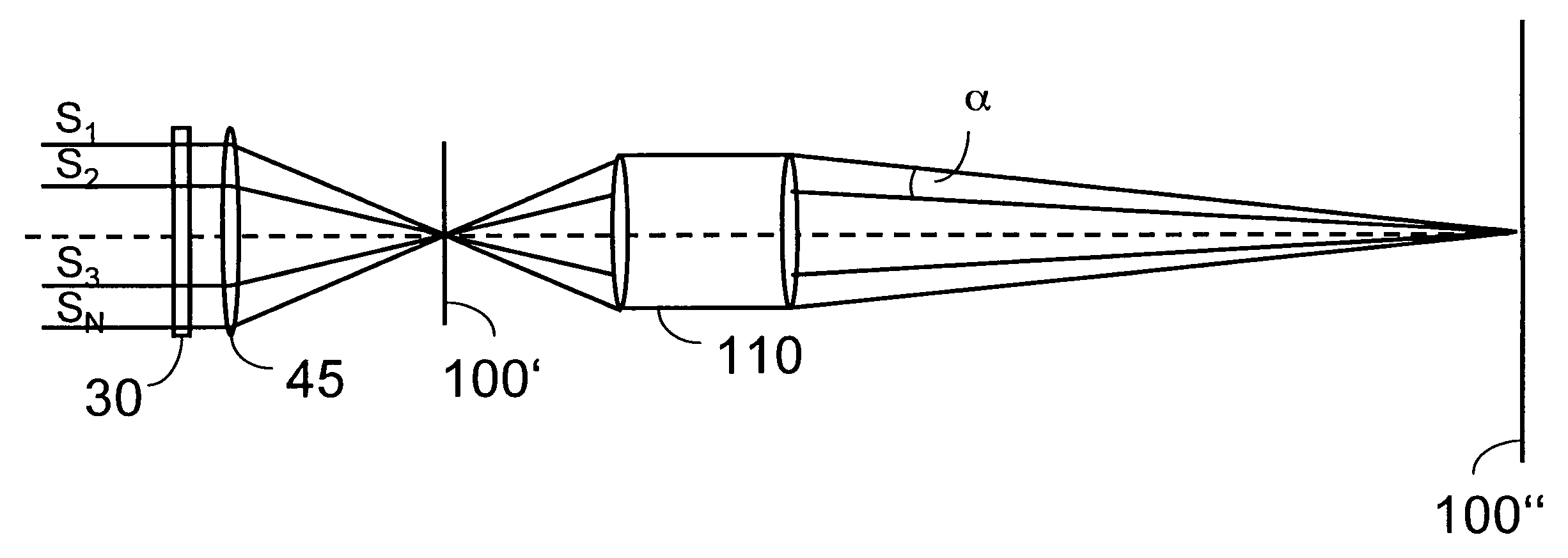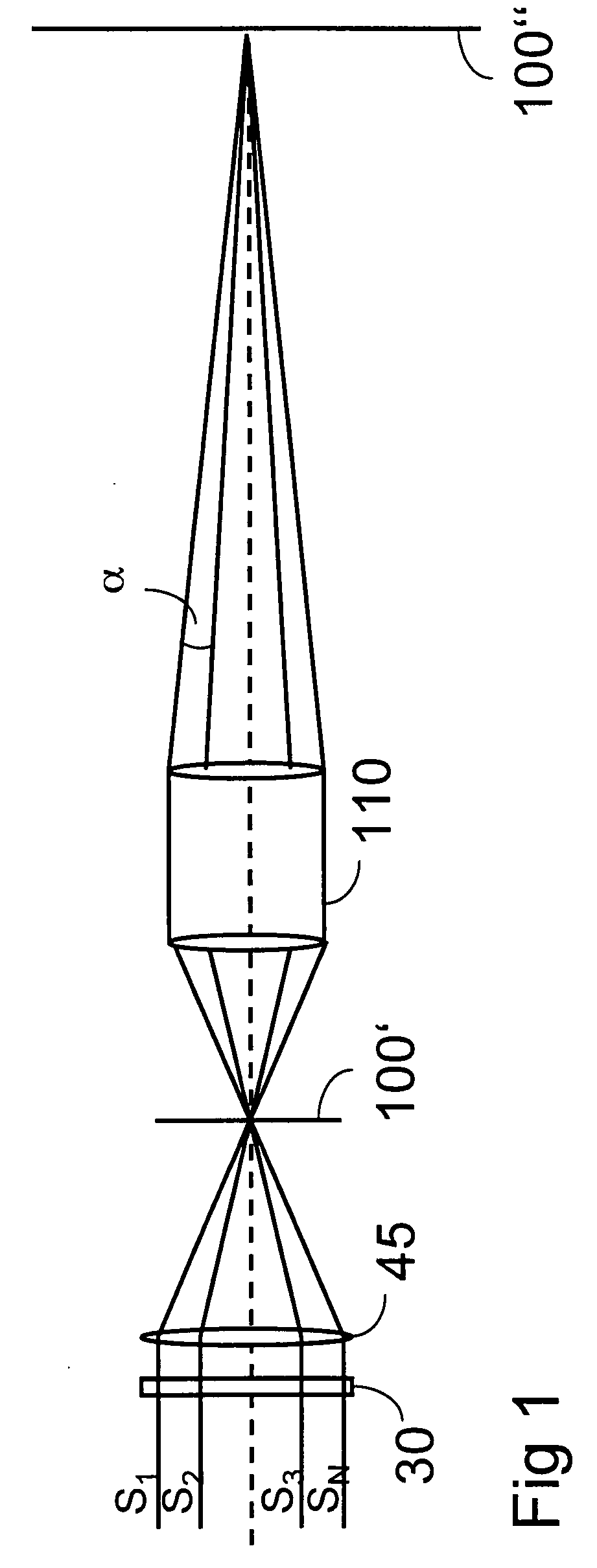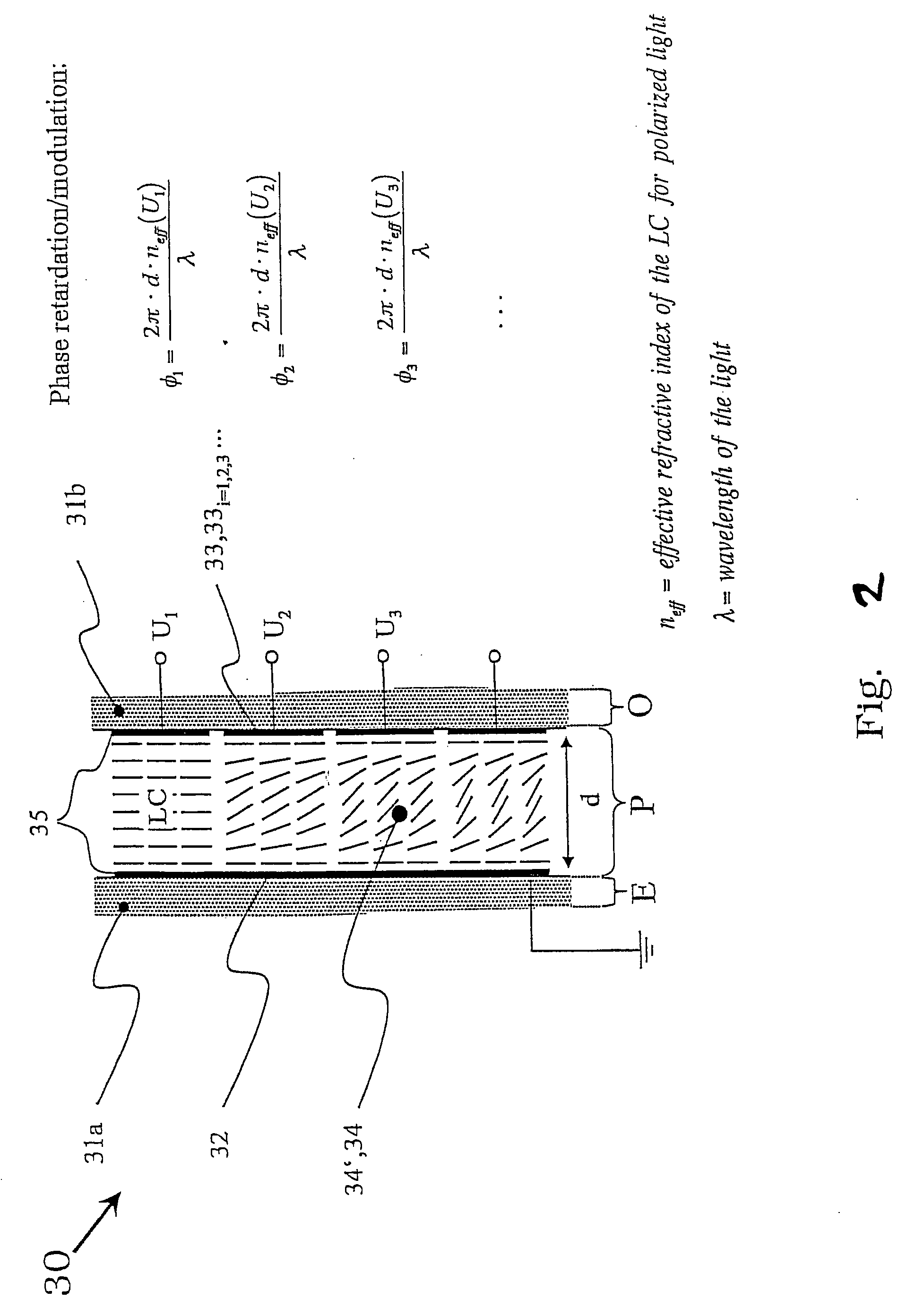Image Generation Unit and Method to Use an Image Generation Unit
- Summary
- Abstract
- Description
- Claims
- Application Information
AI Technical Summary
Benefits of technology
Problems solved by technology
Method used
Image
Examples
Embodiment Construction
[0066]In the following functional and structural description similar or equivalent element structures will be denoted with the same reference symbols. Not in each case of their occurrence a detailed description will be repeated.
[0067]In FIG. 1 it is depicted schematically how a plurality of coherent sub-beams S1, . . . , SN are superimposed with the help of an optical imaging apparatus (here a condenser lens 45) to an image modulator 100′. The image at the image modulator 100′ is projected by the projection lens 110 to the projection screen 100″. The angles α of the projected beams of the sub-beam S1, . . . , SN are sufficiently separated, so that each of the sub-beams S1, . . . , SN will generate a different speckle pattern on the projection screen 100″ which is uncorrelated to the speckle patterns generated from the other sub-beams. The speckle pattern depends on wavelength, size and density of diffusing particles in the projection screen, thickness of the diffusing layer in the p...
PUM
 Login to View More
Login to View More Abstract
Description
Claims
Application Information
 Login to View More
Login to View More - R&D
- Intellectual Property
- Life Sciences
- Materials
- Tech Scout
- Unparalleled Data Quality
- Higher Quality Content
- 60% Fewer Hallucinations
Browse by: Latest US Patents, China's latest patents, Technical Efficacy Thesaurus, Application Domain, Technology Topic, Popular Technical Reports.
© 2025 PatSnap. All rights reserved.Legal|Privacy policy|Modern Slavery Act Transparency Statement|Sitemap|About US| Contact US: help@patsnap.com



